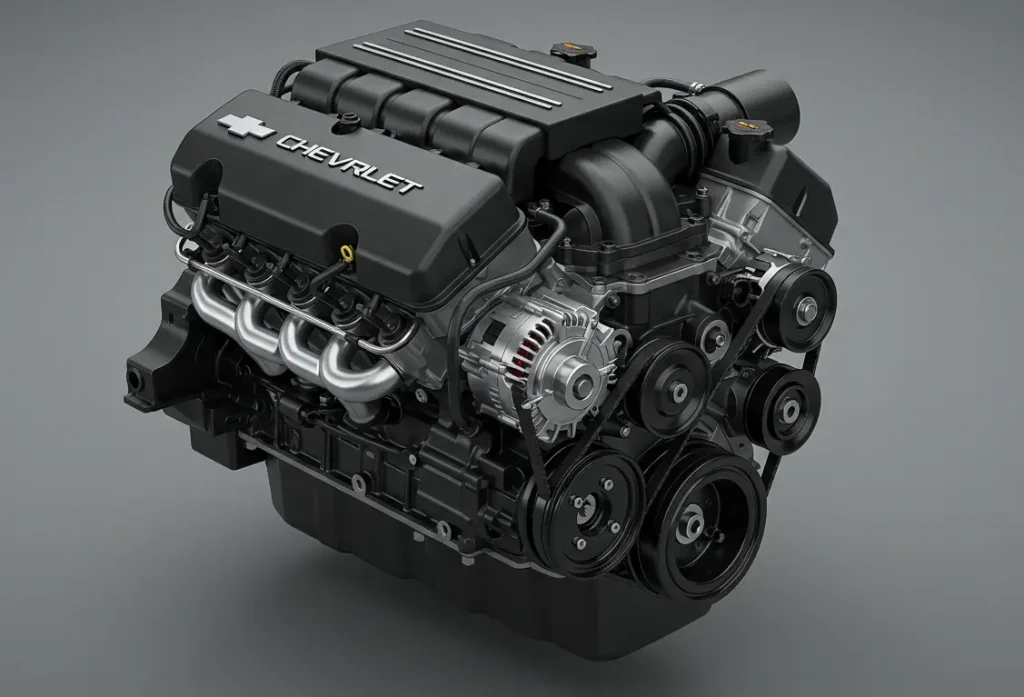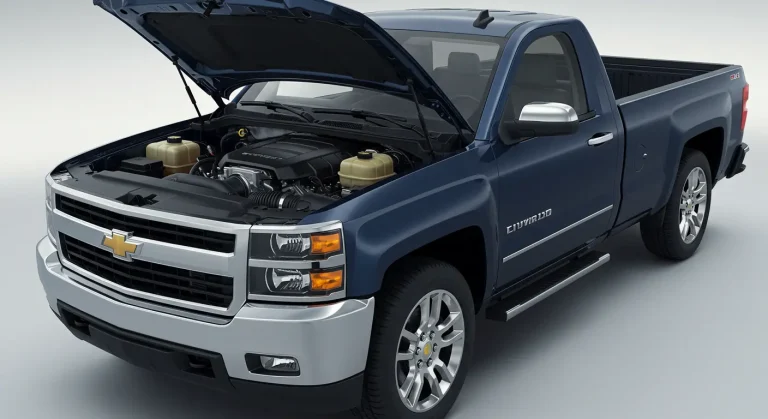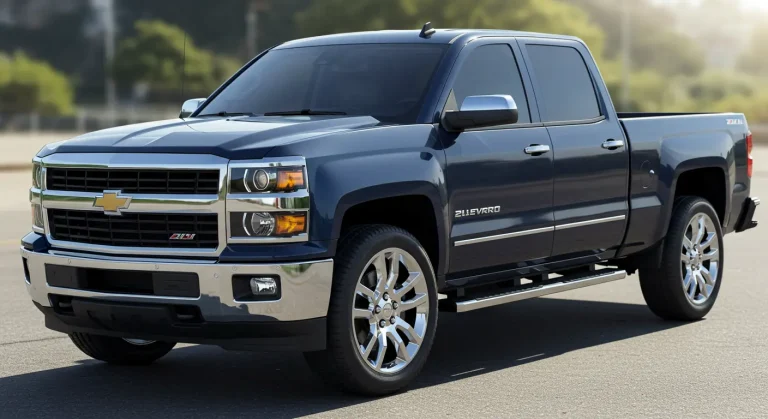What Cubic Inch Is a 5.3 Chevy Motor? Quick Guide
If you’ve ever looked under the hood of a Chevy truck or SUV, then you must’ve seen the 5.3-liter engine. But drivers don’t just talk in liters. They also use “cubic inches.” So, what cubic inch is a 5.3 Chevy motor?
In this guide, we will reveal what cubic inch is a 5.3 Chevy motor and why this size matters for performance and power.

What Does 5.3 Liters Mean in Engine Terms?
When a person states that an engine is 5.3 liters, he means the engine’s total displacement. That is, the total volume of all of the cylinders inside that particular engine. In other words, it’s the space the pistons travel through when the engine operates.
The 5.3-liter designation informs us that all eight engine cylinders push out 5.3 liters of air and fuel. This is a measure of engine size. Greater displacement tends to equal greater power, as a larger volume can burn more fuel and force more air.
Manufacturers now primarily quote in terms of liters to define engines because this is within the metric system. But in America, many car lovers still prefer to quote in cubic inches. That is why the 5.3-liter Chevy engine is called “325 cubic inches engine” by some people. They are like two different names for the same thing.
Also Read: What Is the 2018 Silverado 5.3 Oil Capacity?
How to Convert Liters to Cubic Inches?
Converting liters to cubic inches is very easy. You only need one simple number. A liter is 61.024 cubic inches. To convert, multiply the amount of liters by 61.024.
- Let us test it using the 5.3 Chevy engine.
- Take 5.3 and multiply by 61.024:
- 5.3 in cubic inches is 323.4272 cubic inches.
- Most people round this to 325 cubic inches.
This conversion is useful when speaking with people who use an older system or comparing engines from different eras. Some people are used to measuring engines in cubic inches even though newer cars use liters. Knowing both units helps you understand what type of engine you’re looking at.
The History of the 5.3 Chevy Engine
Chevy manufactured the 5.3-liter engine for the first time in 1999. The new engine entered the market to replace existing small-block V8s and included innovative features. These features boosted output while boosting fuel efficiency and dependability.
The engine launched into the market through the Chevy Silverado 1500 and Tahoe and Suburban series along with specific GMC vehicles. Soon, GM selected this engine as their optimal power unit for their full-size trucks. The engine gained popularity because it combined solid performance power with efficient operations without growing too large.
Chevrolet developed the 5.3L with enhanced fuel systems and stronger components and innovative features which included the introduction of Active Fuel Management (AFM) and Direct Injection.
The production sequence included engine models with designated code names namely LM7, LC9, and L83 based on their model year and feature set. The current production Chevy trucks utilize the 5.3L engine which continues to be recognized for its longevity when owners conduct proper maintenance.
What Cubic Inch Is a 5.3 Chevy Motor?
So what is a 5.3 in cubic inches? A 5.3-liter Chevy engine is equal to about 325 cubic inches. To be exact, it’s 323.427 cubic inches, but most people round it to make things easier.
So when someone says “5.3L V8” and another says “325 small block,” they talk about the same engine. It’s just two different ways to measure engine size—metric vs. imperial.
Cubic inches are more common with older car fans or anyone into classic American muscle. On the other hand, liters are used in modern specs and car ads. They sound different but mean the same.
Common Chevy Models With the 5.3 Engine
The 5.3-liter V8 has driven most of the hottest Chevy models. Here are a few of the most popular vehicles that feature this engine.
Chevy Silverado 1500
For generations, the Silverado 1500 has been powered by the 5.3L V8 in either an L83 version or an LS engine version. It provides a power-to-weight ratio optimal for a full-size pickup in terms of both tow rating and fuel efficiency. Many find it a truck they can depend upon while doing heavy work.
Chevy Tahoe
The Tahoe’s large SUV body is driven by a 5.3-liter engine. It provides enough power for everyday driving and road travel without burning too much fuel. Families appreciate it because it offers a mix of performance and comfort.
Chevy Suburban
This big SUV also performs well with the 5.3 V8 under the hood. It’s perfect for road trips, carrying equipment, or trailer towing. The engine makes the Suburban a good choice for large families and outdoor enthusiasts.
Chevy Avalanche
The Avalanche was a combination pickup and SUV, and the 5.3L engine suited it just right. It provided enough power for hauling and off-roading. Although it’s no longer produced, many still search for it due to its construction and reliable engine.
Chevy Express Van
The Express Van 5.3 engine has been used for delivery, transportation, and labor. It provides the power required to move heavy payloads without straining. The plain engine design simplifies repair and maintenance for use in business operations.
Issues With the 5.3l Engine
The Chevy 5.3L engine is very durable, but as with any engine, it can experience some general problems. Some of these were:
- Oil Consumption: Some 5.3L engines tend to use more oil than usual due to worn piston rings. If not checked regularly, this can lead to low oil levels.
- Active Fuel Management Issues: AFM switches off half of the cylinders of the engine while cruising to conserve fuel. It may sometimes malfunction by causing rough idling, engine misfiring, or worse, the “AFM lifter failure” issue.
- Fuel Injector Problems: Fuel injectors can become clogged or faulty with time. Such problems may lead to loss of fuel economy and misfiring of the engine.
- Timing Chain Issues: Stretching of the timing chain is one of the common complaints concerning engines. This could cause an engine rattle or misfire.
- Coolant Leaks: Some 5.3 liters engines can overflow because of defective seals or gaskets which can lead to overheating if repairs are not conducted.
Read More: Chevy Trax Years to Avoid
Conclusion: What Is a 5.3 in Cubic Inches?
The 5.3 liter engine on the Chevy has 325 cubic inches. It’s described in two ways—liters for modern specs and 5.3 in cubic inches for classic car fans. This engine has powered many reliable Chevy models and continues to be known for its balance of strength and efficiency. Knowing both measurements is a small detail that gives you a better understanding of what’s under the hood.
FAQs
Of course, the 5.3 Liter Chevy engine is very reliable and under proper care it will last long with good mileage.
Most 5.3-liter Chevrolet engines produced between around 355 horsepower in most trim levels, though it does vary a little by model year and trims.
The 5.3L has an amazing towing capacity of up to 9,000 pounds or even more so it is highly efficient in towing boats, trailers, or any huge loads.
According to GM Authority, excessive oil intake and utilization can cause “spark plug fouling, ring wear, and other major engine failures.”





